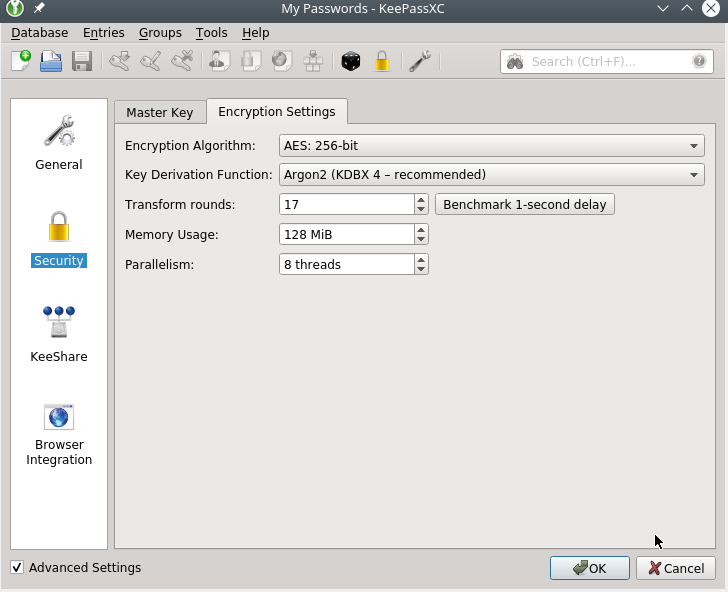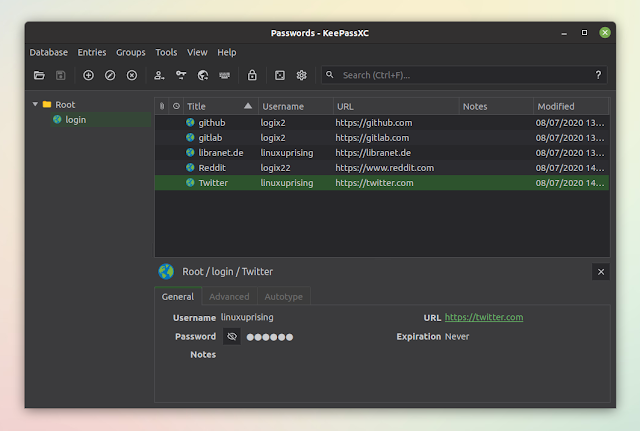

The QR code contains the token that is used to enable the OTP, along with your username, and the service name. You should see a QR code now, which you can scan if you are using a dedicated mobile app. Some rare services might have the option of using their own mobile app for authentication, but we wish to use a third-party one. Choose to enable the 2FA authentication medium. If the service supports 2FA logins, it should be present under the Account or Security sections. The first thing to do is login to the service. While we are using KeePassXC, you could use any of the above-mentioned apps since the process is identical.


The same KeePassXC database can be used on a mobile client such as KeePassDX, a mobile app for KeePass databases. It is the same tool we use to store our passwords.
#Keepassxc wait Pc
In this example, we will use KeePassXC on our PC to generate OTPs. Microsoft and Google also have their own authentication apps if you wish to try them out. Some examples of authentication apps are Aegis, AndOTP and Authy.
#Keepassxc wait password
There are many other standalone OTP apps that are not password managers.
#Keepassxc wait free
We recently wrote an article around password security, why you ought to change your passwords from time to time, and how a free password manager like KeePassXC can make life simple even if you use complex passwords. The point of all this is, you need not wait for OTPs to arrive from the service, when OTPs can be generated on your smartphone, or laptop or PC using an authenticator app. This is what makes it secure, and this is why it changes. The OTP generation regardless of the type happens and is known only by the server and client. The server and client regenerated every 30 or 60 seconds, depending on the decided medium. TOTP or time-based one-time passwords are generated based on time. This is like a secret that the server and the client know and agree upon. The hash algorithm is what determines what the OTP generated is. HOTP stands for hash-based one-time password. The most popular OTP generation methods are using HTOP, and the more popular TOTP. OTPs seem like a random number, but they are generated in a few ways. All of this can be avoided if you use an OTP authentication tool on your phone, PC, or laptop. Sometimes, the e-mail gets lost in the spam or the SMS arrives after the entry countdown ends. You ought to get an SMS or e-mail, then manually type in the OTP into the field. There is no denying that waiting for an OTP from the service you are accessing is annoying. Think of an OTP number as a password that is generated using the same rules or algorithms agreed upon when you enable the 2FA authentication method. To many of us, OTPs are in the hands of the service, but the truth is OTPs, is that they can also be generated on your own device in most cases. In some cases, a randomized number may only be generated by the service you are logging into. Even the inconvenience can be handled with an OTP authentication app. The minor inconvenience brings in a thick layer of security.

An OTP makes hacking your account infinitely difficult. The first question one might have, is why use an OTP? Aren’t passwords secure enough? Some services only offer OTPs as logins authentication, while others ask you to login using a password, then also enter an OTP. What do these terms OTP, TOTP and HOTP mean, and why should you use 2FA to begin with? Is there any way to make life simpler when using 2FA? We hope to answer all those questions. It seems like a hurdle no doubt, but there is more to it. It takes a while to arrive, it is annoying to copy and paste. It could also be looked at as an inconvenience since you need to enter yet another passcode, but one that comes as an SMS or e-mail to your device. It might sound like just an additional, numerical password. The term 2FA (2-Factor Authentication) is thrown around on every major web service and app.


 0 kommentar(er)
0 kommentar(er)
